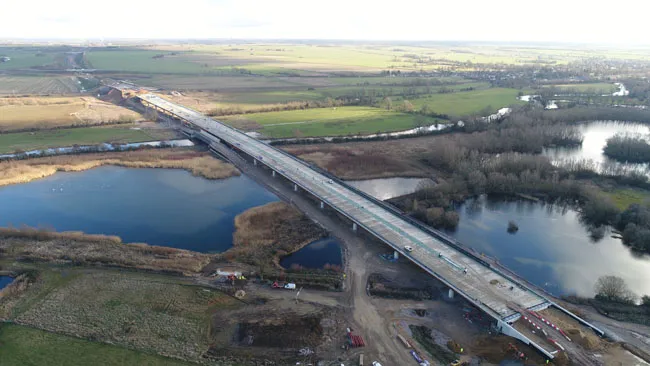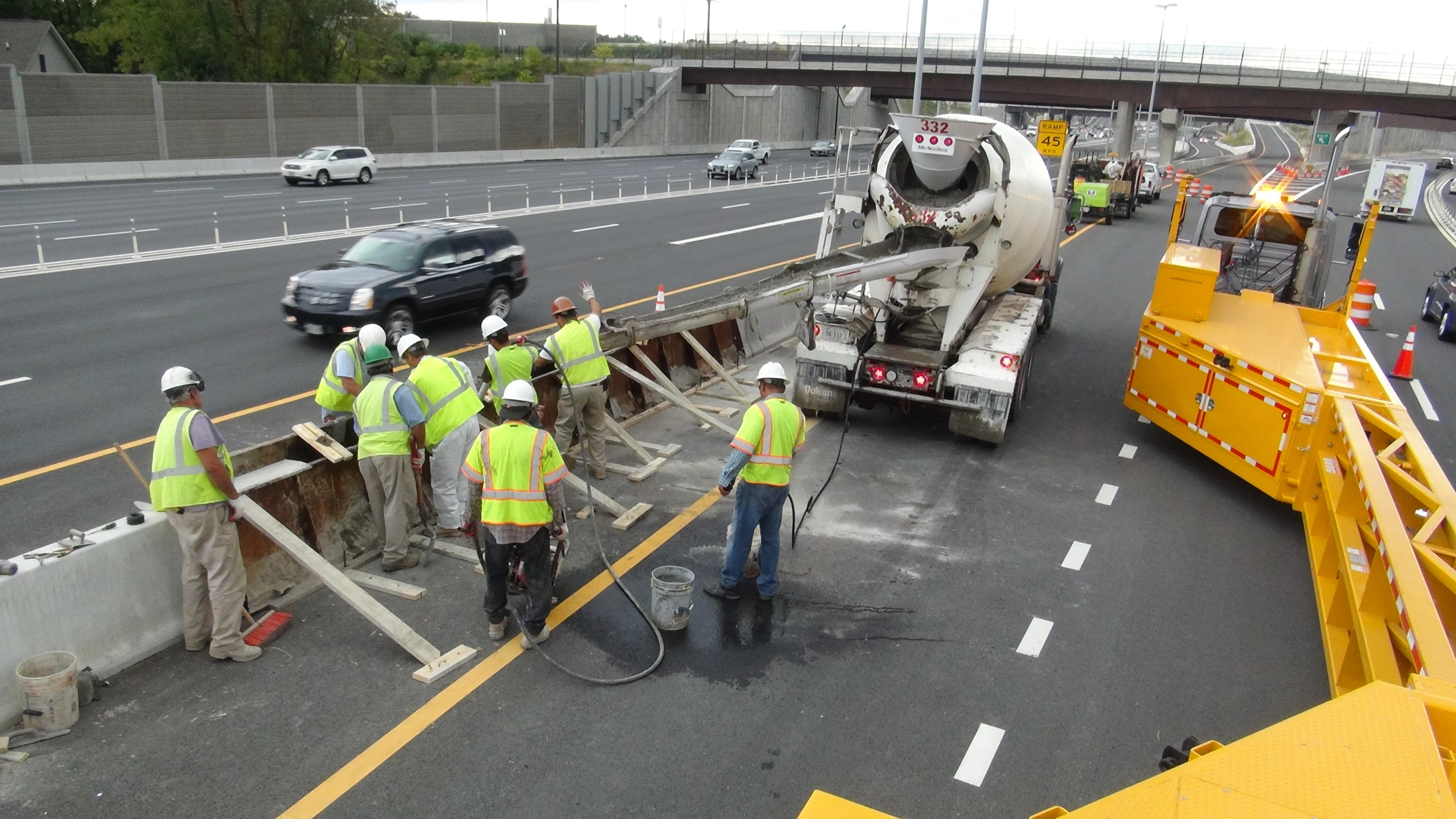
Construction of the biggest bridge in
The River Great Ouse Viaduct stretches for 0.8km and when opened to traffic next year will take the new A14 road over the floodplain and the East Coast Mainline Railway line.
Work began in November 2016 on the bridge that is part of a new 27.4km bypass under construction to the south of Huntingdon and away from the existing A14. The road is being widened to three lanes in both directions.
Willie McCormick, construction director for the A14 project said the programme calls for 34 new bridges which will cater for around 85,000 vehicles a day along the bypass. “We’ve already opened nine of these to traffic, but around three-quarters of the work we are doing is off the existing road network and unseen to drivers,” he said. “We’re over half way through delivering the new A14.”
Around 64 pillars are needed to carry the viaduct over the River Ouse floodplain, each around 2m wide and embedded up to 30m in the ground. The pillars support the 17 spans of steel beams and concrete slabs which form the bridge deck. When the new A14 fully opens by December 2020, the bridge will help to reduce journey times on the road by up to 20 minutes.
Highways England said that working in an on-site prefabrication yard helped the team complete the viaduct structural work for €4.6 million less than anticipated by using more traditional methods. It also made it safer for the workforce with less time spent working at height.
The A14 upgrade was the subject of a key project report in World Highways issue June 2018.
%$Linker:






